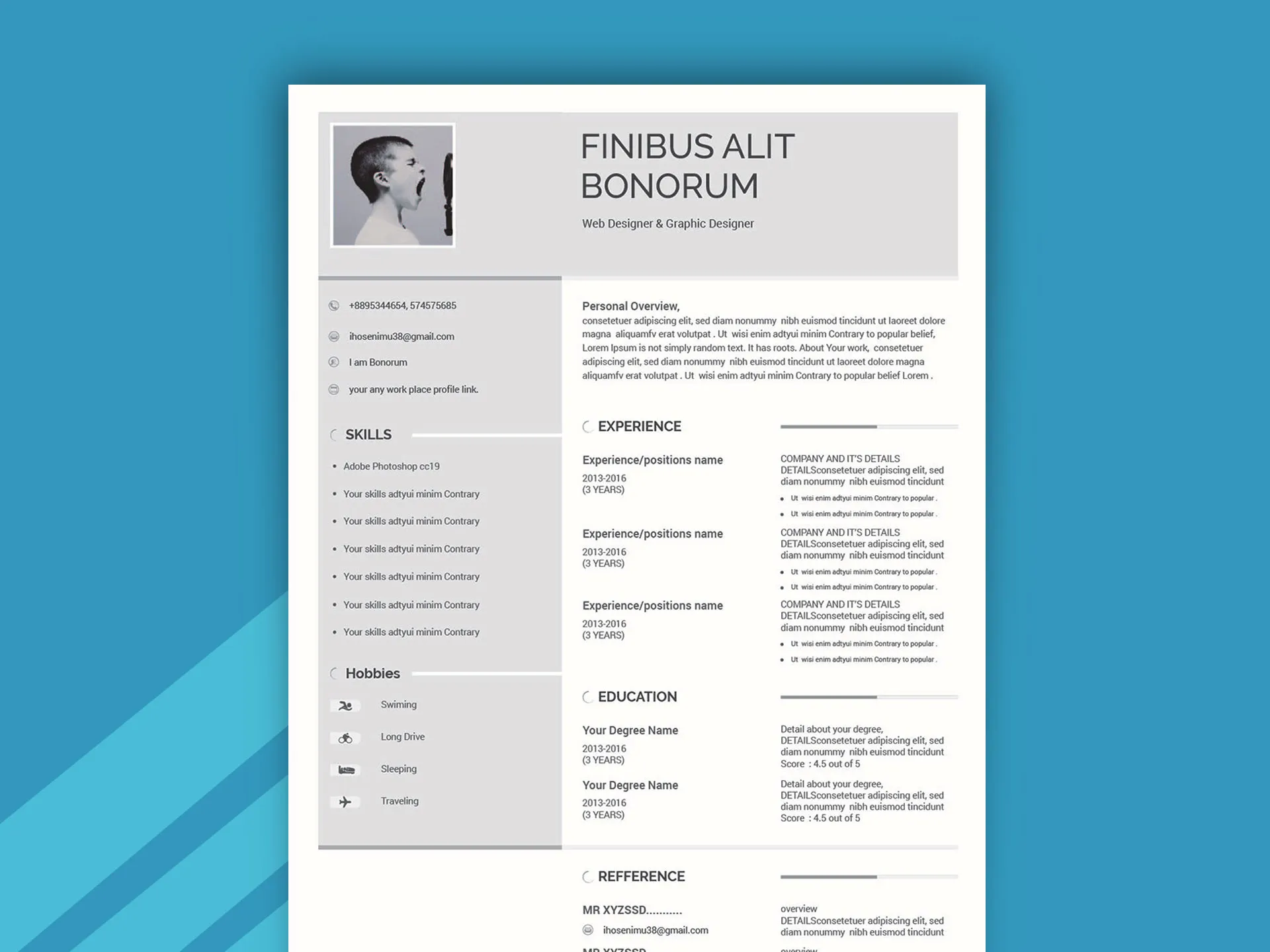What is a Cover Letter
A cover letter is a crucial document that accompanies your resume when applying for a job. It serves as an introduction, allowing you to showcase your personality, skills, and qualifications in a more personalized way than a resume. Unlike a resume, which provides a concise overview of your experience and education, a cover letter gives you the opportunity to elaborate on why you are a suitable candidate for a specific role and why you are interested in the company. It’s your chance to make a strong first impression and persuade the hiring manager to read your resume and consider you for an interview. Crafting a compelling cover letter is essential for differentiating yourself from other applicants and increasing your chances of landing your dream job.
Key Components of a Cover Letter
A well-structured cover letter typically includes several key components that work together to present a cohesive and persuasive argument for your candidacy. Each section plays a vital role in conveying your qualifications, enthusiasm, and suitability for the position. Understanding these components is crucial for creating a cover letter that effectively grabs the attention of the hiring manager and encourages them to learn more about you.
Contact Information
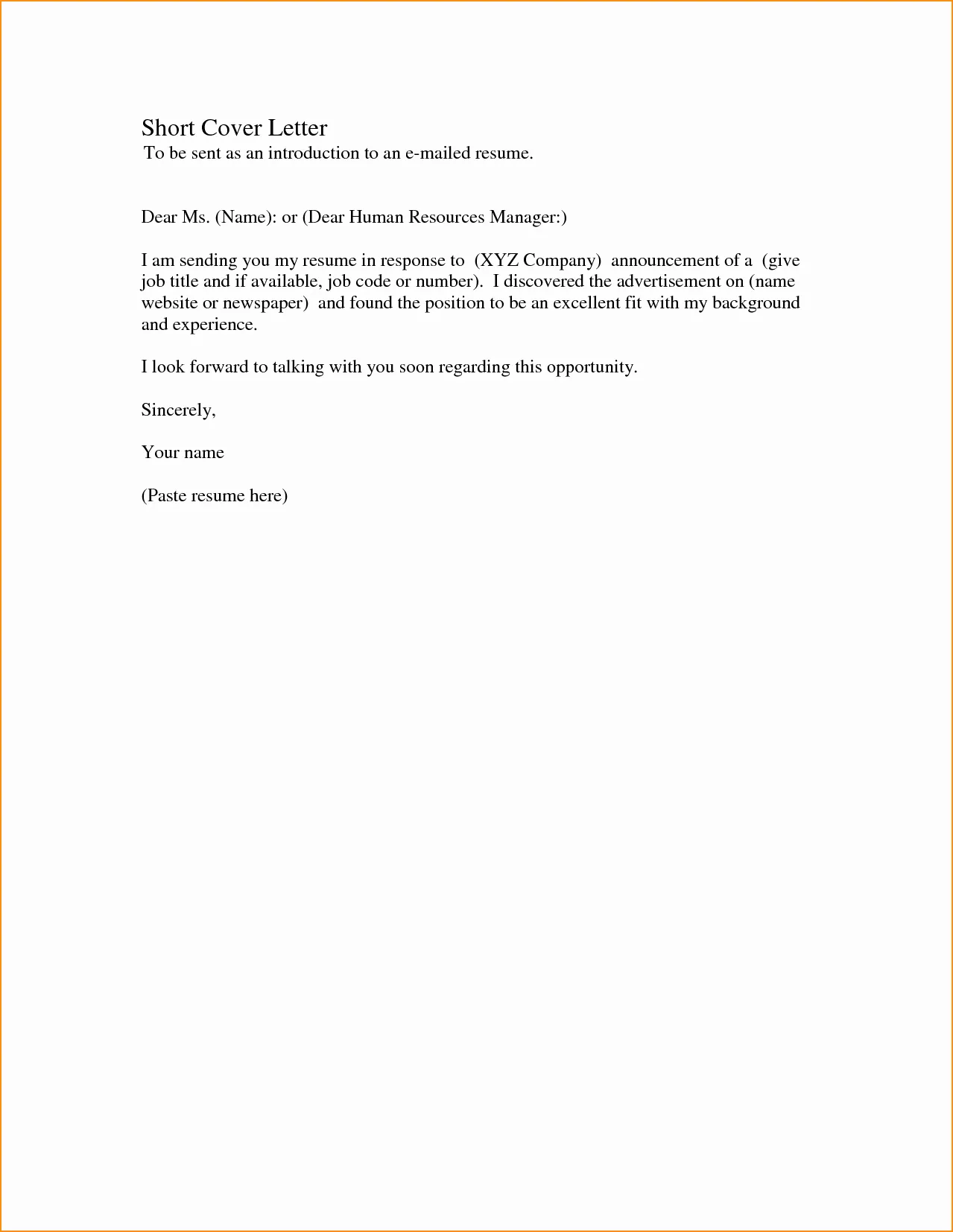
At the top of your cover letter, include your contact information, such as your name, phone number, email address, and LinkedIn profile URL. This allows the hiring manager to easily reach you if they are interested in your application. Ensure your contact information is accurate and professional.
Salutation
Address the hiring manager or the specific person mentioned in the job posting. If a name isn’t provided, use a professional greeting like “Dear Hiring Manager.” Avoid generic greetings like “To Whom It May Concern,” as they can make your letter seem impersonal. Research the company and try to find the name of the hiring manager to personalize your letter.
Opening Paragraph
The opening paragraph should capture the reader’s attention and state the purpose of your letter. Briefly mention the position you’re applying for and how you learned about the opportunity. You might also include a brief, compelling statement about why you are interested in the role and the company, demonstrating your enthusiasm and making a strong first impression. It should hook the reader and encourage them to continue reading.
Body Paragraphs
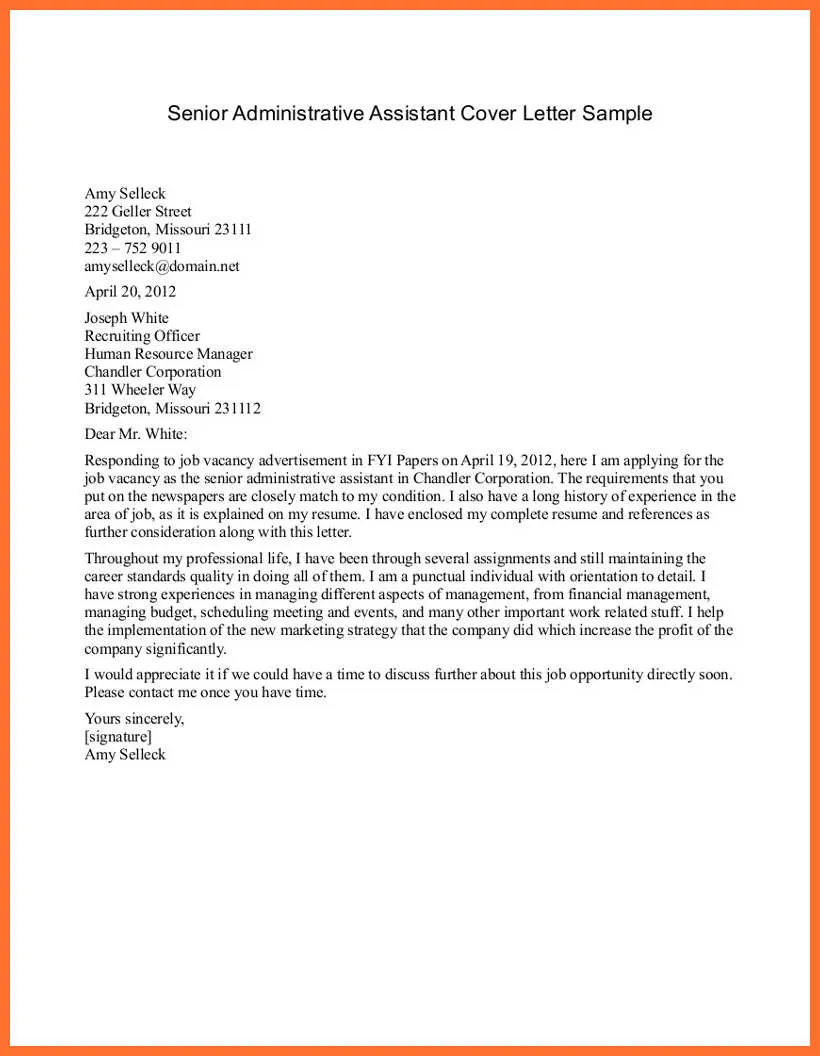
The body paragraphs form the core of your cover letter. In these sections, highlight your relevant skills, experiences, and accomplishments that align with the job requirements. Use specific examples to demonstrate how you’ve achieved success in previous roles and how your abilities can benefit the company. Tailor these paragraphs to match the specific needs and requirements of the job description, showing that you understand the role and the company’s goals. Quantify your achievements whenever possible to showcase your impact.
Closing Paragraph
In the closing paragraph, reiterate your interest in the position and the company. Express your gratitude for the hiring manager’s time and consideration. Include a call to action, such as stating that you look forward to the opportunity to discuss your qualifications further in an interview. Keep the tone positive and enthusiastic.
Sign-off
Use a professional closing, such as “Sincerely,” “Best regards,” or “Thank you,” followed by your typed name. If submitting a printed cover letter, leave space for your signature above your typed name. This final touch adds a professional polish to your application and reinforces your commitment to the opportunity.
Formatting and Design
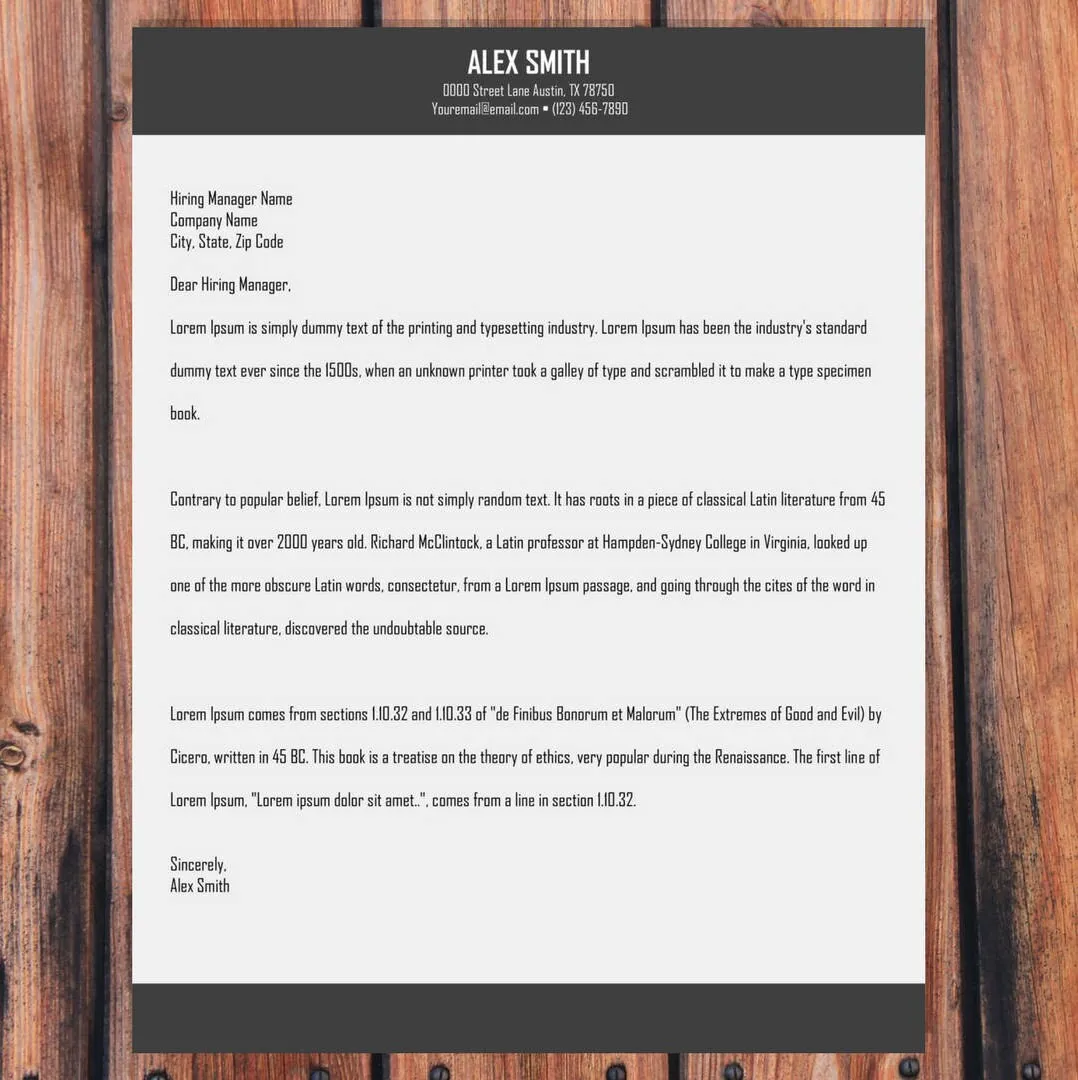
The formatting and design of your cover letter are just as important as its content. A well-formatted cover letter is easy to read and reflects your attention to detail and professionalism. Poor formatting can detract from your message and potentially lead to your application being overlooked. Careful attention to font selection, margins, and spacing helps create a visually appealing and effective cover letter.
Font Selection
Choose a professional and readable font, such as Times New Roman, Arial, Calibri, or Helvetica. The font size should be between 10 and 12 points for easy readability. Avoid using overly decorative or unusual fonts, as they can be distracting and make your letter appear unprofessional. Consistency in font choice throughout the document is crucial for a polished look.
Margins and Spacing
Use standard margins (1 inch on all sides) to create a balanced and visually appealing layout. Ensure proper spacing between paragraphs and sections. Use single-spacing within paragraphs and double-spacing between paragraphs for clarity. Adequate spacing prevents the letter from appearing cluttered and makes it easier for the reader to scan the document quickly.
Length Considerations
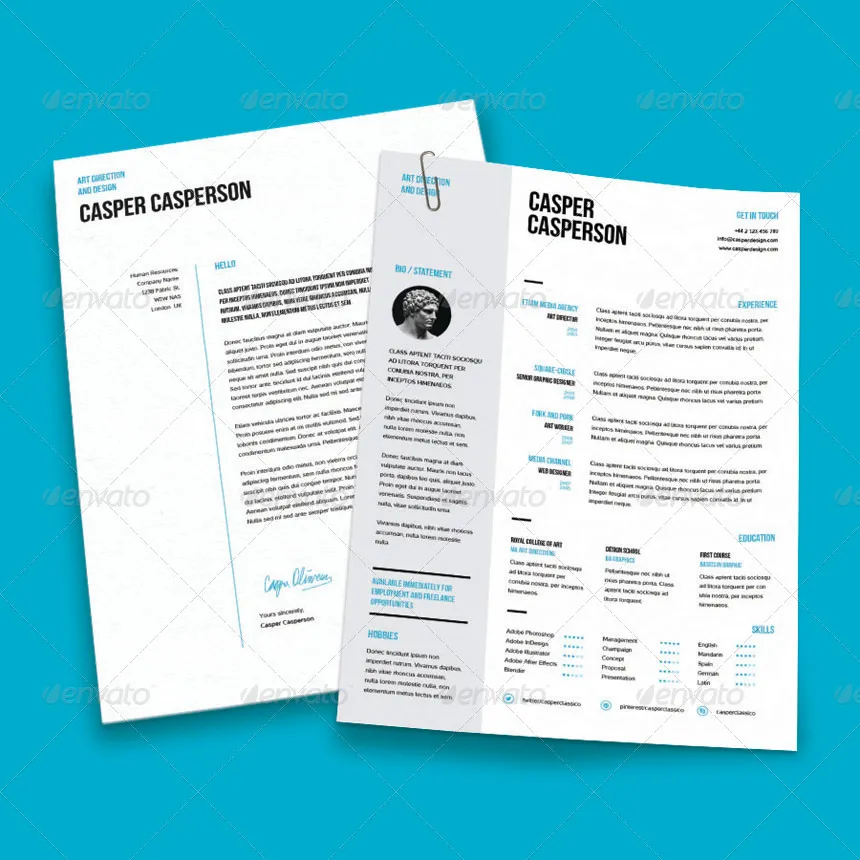
Keep your cover letter concise and to the point. Aim for one page, as hiring managers often have limited time to review applications. Focus on the most relevant information and avoid unnecessary details. If your experience is extensive, prioritize the most recent and relevant information. Remember that a well-written, brief cover letter is more effective than a lengthy one.
Cover Letter Examples
Reviewing different cover letter examples can provide valuable insights into how to structure your letter effectively and highlight your qualifications. Examples tailored to different career stages and situations can help you adapt your approach to best suit your needs. Examining these examples can give you a practical understanding of what works and how to apply these techniques to your own cover letter.
Example 1 Recent Graduate
A cover letter for a recent graduate should emphasize academic achievements, internships, and any relevant extracurricular activities or projects. Highlight transferable skills such as communication, teamwork, and problem-solving. Demonstrate your enthusiasm for the industry and the specific company. Consider including any relevant coursework or research projects. This section should illustrate how a recent graduate can effectively present their skills and qualifications, even with limited professional experience.
Example 2 Career Changer
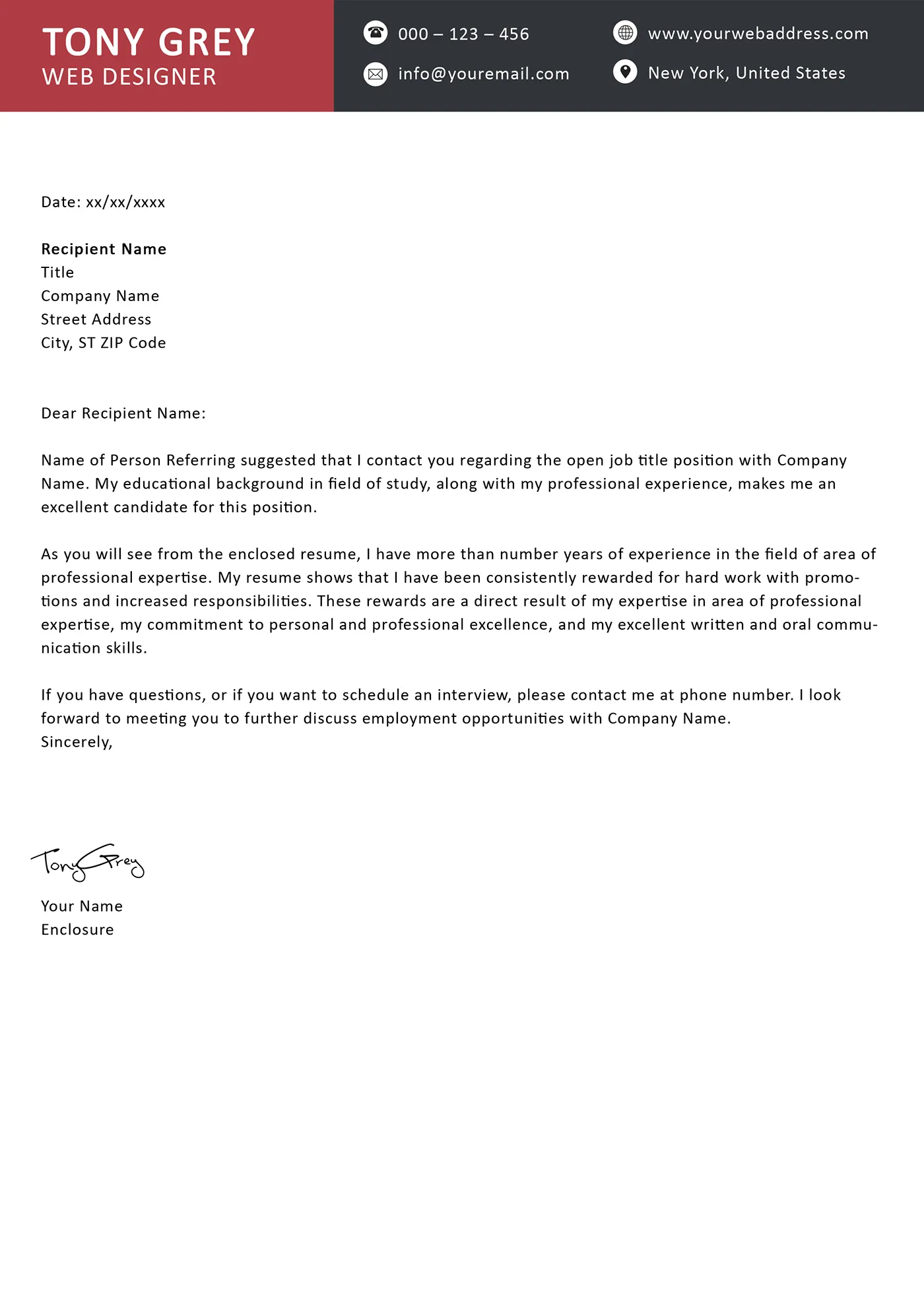
For a career changer, the cover letter should focus on transferable skills and experiences that align with the new role. Emphasize any relevant projects, volunteer work, or certifications that demonstrate your suitability. Clearly explain your reasons for the career change and your enthusiasm for the new field. Focus on the skills you have that are applicable to the new job. Show how your previous experiences have prepared you for the desired role. This example should guide career changers in framing their experiences in a way that emphasizes adaptability and a desire to grow.
Example 3 Experienced Professional
An experienced professional’s cover letter should highlight significant achievements and accomplishments in previous roles. Quantify your results whenever possible, providing specific data and metrics to demonstrate your impact. Focus on your leadership skills, industry knowledge, and expertise. Show how your skills and experience align with the job requirements and how you can contribute to the company’s success. This example should provide a clear illustration of how to present expertise in a compelling and results-oriented manner.
Tips for Writing a Killer Cover Letter
Writing a truly effective cover letter involves more than just following a template. It requires careful consideration, tailoring, and attention to detail. Applying these additional tips can significantly enhance your chances of making a strong impression and securing an interview. Following these additional tips will ensure your cover letter stands out.
Tailor Your Letter
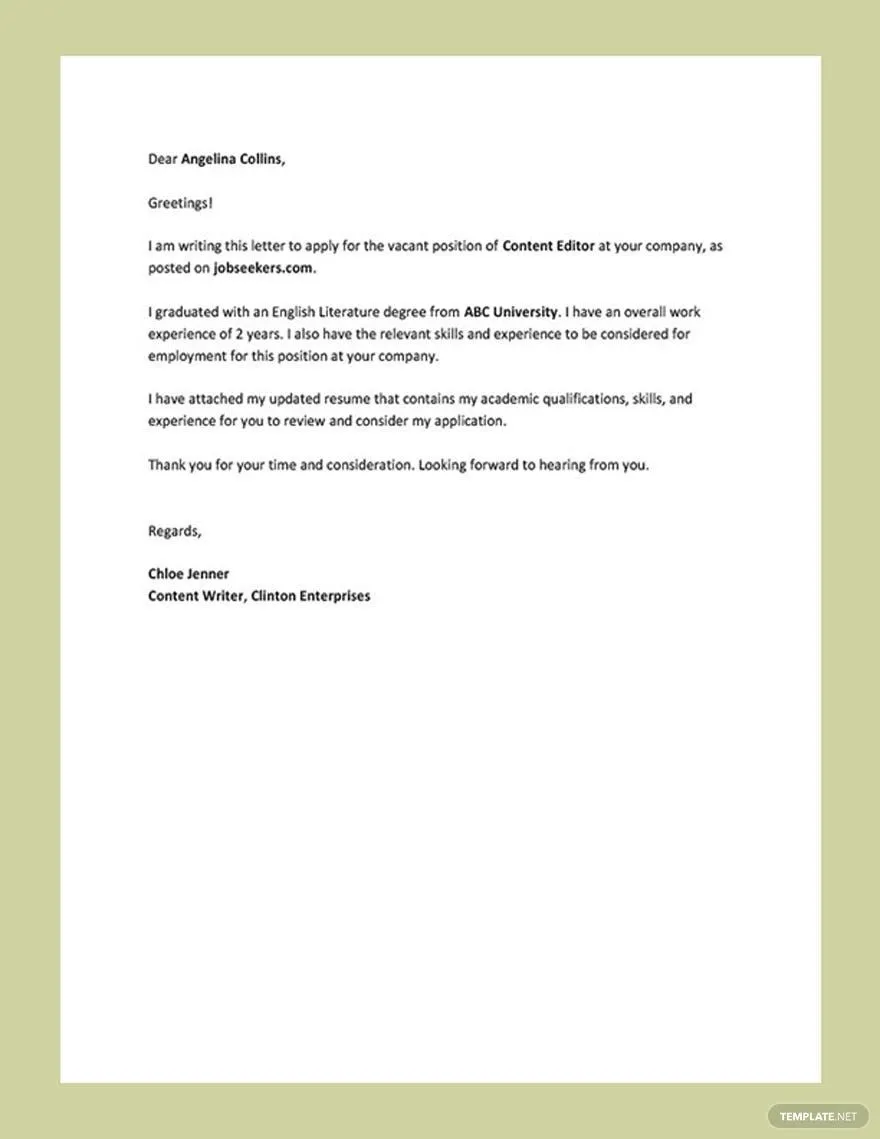
Customize your cover letter for each job application. Don’t use a generic template. Research the company and the specific role to understand their needs and requirements. Highlight the skills and experiences that are most relevant to the job description. Show how your qualifications align with their specific needs and explain why you are a good fit for their company. Customization shows your genuine interest and commitment.
Highlight Relevant Skills
Identify the key skills and qualifications required for the job and highlight them in your cover letter. Use keywords from the job description to demonstrate that you meet the requirements. Provide specific examples of how you have used these skills in the past and how you have achieved positive outcomes. Make sure to clearly show how you have applied these skills in practical situations to demonstrate your competence.
Proofread Carefully
Always proofread your cover letter for any grammatical errors, spelling mistakes, or typos. Errors can damage your credibility and create a negative impression. Use a grammar checker, and ideally, have someone else review your letter to catch any mistakes you might have missed. Pay close attention to detail to ensure your cover letter reflects your professionalism and attention to detail. A polished cover letter shows that you care about your application.
In conclusion, a well-crafted cover letter is a critical element of a successful job application. By understanding its key components, following formatting guidelines, and tailoring your letter to each job, you can significantly increase your chances of getting noticed. Remember to always proofread and highlight your most relevant skills and experiences. Embrace these strategies, and you’ll be well on your way to writing a killer cover letter that lands you interviews and ultimately, your dream job.
